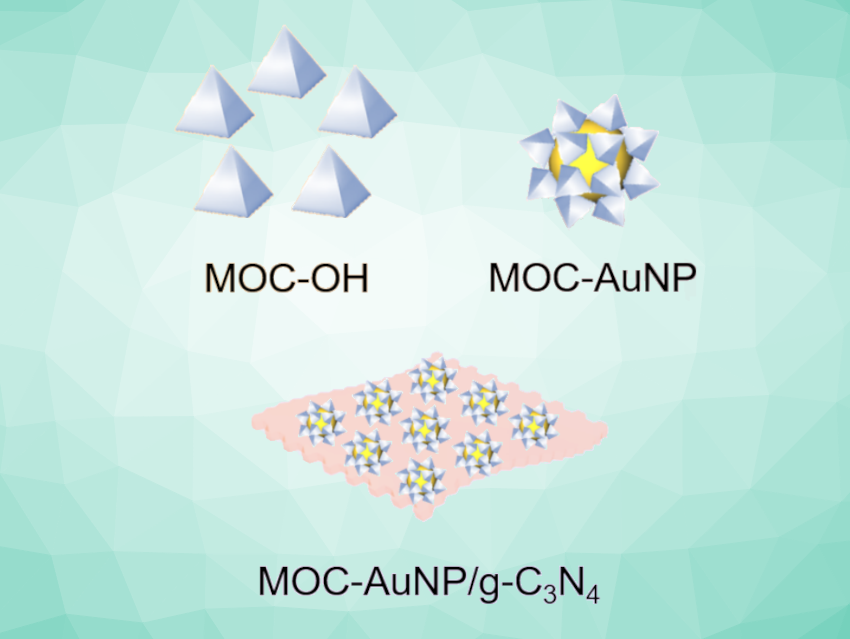Hydrogen peroxide is a widely used environmentally friendly oxidant. The traditional anthraquinone process for producing H2O2 has drawbacks such as high energy consumption and safety risks. The development of alternative efficient, green, and economical methods for H2O2 production is, thus, an interesting research target. Piezocatalysis could be a useful approach for this. In piezocatalysis, the piezoelectric effect is used to convert mechanical energy, such as vibrations from the environment, into electric energy and trigger reactions.
Shuchen Tu, South China Normal University, Guangzhou, China, Changlin Yu, Xiangming Li, Guangdong University of Petrochemical Technology, Maoming, China, and colleagues have developed a piezocatalyst for H2O2 production. The team prepared metal-organic cage (MOC)-coated gold nanoparticles that are anchored on graphitic carbon nitride (MOC-AuNP/g-C3N4). The metal-organic cages (MOC-OH) were synthesized from zirconocene dichloride and 2-hydroxyterephthalic acid, and the coated gold nanoparticles were then obtained by an in-situ reduction of Au3+ using the metal-organic cages. The team prepared ultrathin graphitic carbon nitride using a hydrothermal reaction and thermal polymerization. The MOC-coated gold nanoparticles and the graphitic carbon nitride were then assembled to obtain the desired MOC-AuNP/g-C3N4 nanohybrid.
The synthesized MOC-AuNP/g-C3N4 can be used as an efficient piezocatalyst to generate H2O2 at rates up to 120.21 μmol g–1 h–1 in air and water. According to the researchers, the MOC component enhances substrate (O2) and product (H2O2) adsorption via host-guest interactions and hinders rapid H2O2 decomposition, while the gold nanoparticle component affords a strong interfacial electric field that promotes the migration of electrons from the graphitic carbon nitride for the O2 reduction reaction. Overall, the work shows the potential of multi-site engineered materials as piezoelectric catalysts for H2O2 synthesis.
- Promoting Piezocatalytic H2O2 Production in Pure Water by Loading Metal‐Organic Cage‐Modified Gold Nanoparticles on Graphitic Carbon Nitride,
Meng Fu, Jinghong Luo, Bo Shi, Shuchen Tu, Zihao Wang, Changlin Yu, Zequn Ma, Xingyuan Chen, Xiangming Li,
Angew. Chem. Int. Ed. 2023.
https://doi.org/10.1002/anie.202316346




